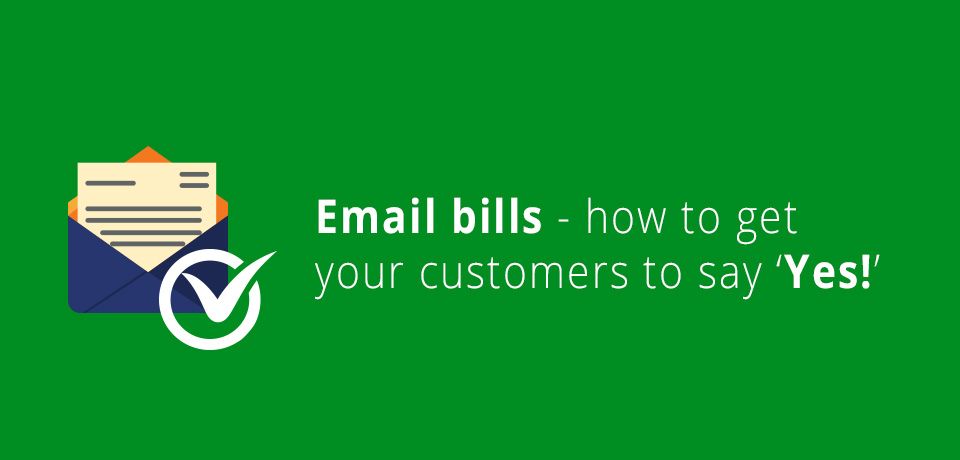
Getting customers to opt-in to email communications is a priority for many companies as a means to increase revenue, as well as reduce costs by going paperless. For companies looking for ways to get their customers to convert from paper bills to eBilling, what better way to do so, than to just send them the email bills anyway?
In this blog post, my focus is on how to get customers to consent via email, thus maximizing take up of email as a billing channel.
The proactive consent email
The key to continued success it to leverage every customer touch point to create that paperless opportunity, but today I want to focus on arguably the top opportunity – the proactive consent email.
I’ve discussed email collection strategies in a previous post , so the next step is to use those emails collected to get customers to go paperless.
Sending a proactive consent email generally results in a fairly quick consent rate of 20% – 35% as a percentage of emails opened. Here are some tips on how this can be achieved:
4 Tips on how to leverage proactive consent emails for successful eBilling adoption
1. One click to consent: The biggest deterrent to going paperless is a lengthy registration process on a company’s website. Keep their activity to a single click on a call to action button or link. Remember that each additional step will reduce that subscribe rate.
2. Design with consent in mind: Don’t over-complicate the email with too much text or too many links. The call to action (consent to paperless) should be the first thing that the customer sees when they scan the email body – where possible, use links and in the preheader too. It’s also important that you personalize this consent email by displaying partial data on the customer’s account to gain trust, which may help drive the required action.
3. Optimize the consent process for mobile: Mobile usage is rapidly increasing and this will not slow down anytime soon. Many companies are seeing over 50% of their email bills and consent emails being viewed on a mobile device… Create a single call to action in a simple mobile optimized design that caters to mobile users.
4. Develop a triggered email consent strategy: This is important to implement if you aren’t willing to leave potential paperless subscribers out (which you shouldn’t be!) Rather than just sending a single consent email to customers, track responses and have a plan to send additional email to non-responders. A client recently implemented a triggered email consent process, and sent two additional emails to customers. The results:
- The first triggered message generated a 21% subscribe rate
- The second triggered message generated a 19% subscribe rate
Consent emails should never be a once-and-done process. Testing, tracking, monitoring, changing and re-testing are all integral to a successful paperless strategy and gaining consent for email billing.
*This blog was originally published on onlyinfluencers.com and has been adapted for the Striata website














